Rennes-le-Château
Interview with Jeanne D'Aout: New book with Otto is out
Q: It’s nice to meet you again. Congratulations on your new book!
The new book, The Eye of Ra, also features Otto Rahn. I know every new book is always a breakthrough for a real writer. What was your main finding?
A: My most important discovery while writing my second book, ‘The Eye of Ra’, is the incredible experience of having lots of questions and finding out as soon as I started writing, that I had the answers already within me. Writing activates something in the brain that helps you understand certain things that are normally difficult to understand. Writing ‘The Eye of Ra’ took me back to ancient Egypt, where I set myself the quest of discovering the identity of the Biblical divination stones known as the Urim and Thummim, and to understand the psyche behind the heretical Pharaoh Akhenaten.
White Lie by Jeanne D'Aout
The Secret of Otto Rahn - Relic Hunter
The nineteen thirties, Nazi Germany. Organisations like the Nordische Gesellschaft and the Thule Gesellschaft were researching the origin of the Germanic people, the Arian race. Obsessed with the ancient cultures which connected their ancestors, they searched all corners of the earth trying to find relics and remains of these old civilizations. Relic hunter Otto Rahn seached for the Grail treasure. Here, in Occitania.
Rahn visited Occitania many times and stayed for months at the time during 1929 - 1932. In '32 he leased a hotel called 'Les Maronniers' in Ussat-les-Bains. On the photo we see him entertaining his mother in the garden of the hotel. He is wearing a sweater which his mum nitted for him, showing the symbol of the Thule Gesell-schaft of which he was a member. When the hotel went bankrupt, he had to leave France.
Отто Ран и Пиренейский Грааль
Поскольку о Граале говорится и пишется много, каждый ищет что-то значимое для себя. Самое загадочное здесь то, каким образом эта священная реликвия вообще оказалась связанной с альбигойцами? Ведь мы знаем так же и рассказ о том, что Иосиф Аримафейских лично отвез Чашу – если это была действительно чаша – в Англию, в Гластонбери…
(Кажется, что каждая страна по своему трактовала легенду о Граале, с учетом местных фольклорных особенностей и легенд... Проходя «сквозь» местную мифологию, эта легенда - и сам артефакт – обретали форму, в которой были наиболее приемлемы и священны в данной местности? В Англии, в Британии, где кельты и друиды почитали богиню Керрридвенн и ее священный котел – Грааль так же принял форму чаши. А в Пиренеях, где поклонялись Кибеле в пещерах и гротах, где находили метеориты, упавшие с неба, с их целительными свойствами – Грааль стал камнем, упавшим практически тоже с неба, из короны Люцифера. Не забудем, что легенды о Граале имеют больше литературное происхождение, скажем так, а не фольклорное.)
The wooden book of Montségur
In the early 20th century, a series of palm leaves, containing anomalous writing, were apparently discovered within a hidden cache of the walls of the Cathar castle of Montségur. Though without any intrinsic value, the “wooden book” – as it became known – would become the centrepiece of the esoteric and metaphysical community; its discoverers even labelled it “the Oracle” and said it was able to contact the hidden masters of Agharta.
Montségur is seen as the final stronghold of the Cathar faith, a bastion of true devotion besieged by the worldly ambitions of the papal troops. In March 1244, the Cathars that had been locked inside the castle for months finally surrendered; approximately 220 were burned en masse in a bonfire at the foot of the pog when they refused to renounce their convictions.
Rescanières: another unsolved death?
A memorial slab
Stand in the covered hallway that is in front of the church of Rennes-les-Bains, and you will find that the community indeed had respect – more so than for the other priests that served the community, it seemed – for Boudet. That in itself should be remarkable. However, there is also another name on the memorial slab: Rescanières.
The interesting thing is that Rescanières only served as priest of Rennes-les-Bains for one year: 1914 to 1915. It left him little time to leave an impression, it seems, but apparently he did. And the reason why and how he did so, has to do with his sudden, unexpected – and premature death: Rescanières was only 47 years old when he died. Might it therefore come as a surprise that some believe that he was murdered?
Karl Hammer-Kaatee published “Satans Lied: De Jacht van de CIA op Jezus. Waargebeurd verhaal”
666 = Satan’s Song?
Not just any other Rennes-le-Château< book?
In September 2006, Dutch author Karl Hammer-Kaatee published “Satans Lied: De Jacht van de CIA op Jezus. Waargebeurd verhaal”, or “Satan’s Song. The CIA Hunt For Jesus. A true story.”
Though written in the format of a novel, the book claimed to be based on facts. The publication itself does not list an official classification (e.g. fiction) on the book itself, hence leaving one guessing as to which category it fell into.
The book claims to be the account of one “Tom R.”, who told his life’s story to Hammer in the mid 1990s. After Tom’s death, Hammer transformed the notes of a man’s life into the present book.
Roscoe's solution (Part thereof)
In Geography Strabo (64 B.C-23 A.D.) tells of a massive 300 tons of gold and silver bullion that was recovered by the Romans from the Celtic temples at Narbonne. This is near the mouth of the Aude river on the French Mediterranean coast. A further eighty kilometres up the Aude is Rennes-le-Chateau. Strabo attributes the bullion as either an accumulation of Celtic sacred offerings, or else the Celts' loot from the Greek treasuries at Delphi, sacked in 278 B.C. The Romans somehow lost the bullion near Narbonne during Caesar's Gallic Wars and it was never recovered.
The gold was taken from a votive lake by a Roman proconsul by the name of Cæpion. He took 80 tons of gold and money and immediately re-melted this into ingots. This apparently disappeared during its transport towards the port of Narbonne following an attack from Volkes tectosages upset by this profanation of their sacred offerings. They would have then withdrawn to the high valley of the Aude and would have hidden the treasure in this area which is easy to police.
Otto Rahn: To Rennes or not to Rennes?
Claims
“The Emerald Cup-Ark of Gold: the Quest of SS Lt Otto Rahn of the Third Reich”, Colonel Howard Buechner claimed that Otto Rahn visited the Corbières in 1937. This visit is not substantiated. However, there is little doubt in my mind that there is a strong connection between Rahn and Rennes-le-Château. I found these connecting links:
- Rahn’s link to the Cathars whom he loved with great passion;
- The war waged against the Cathars by the Church and the French King, a war of such ferocity that it brings into question the true nature of the cause for which the crusade against Albigensian and Cathar was really launched;
- Rennes-le-Château is seated in the Cathar heartland; Saunière discovering something linked to the “real” story of Catholic geopolitical involvement in the West over the centuries;
- The Vatican not speaking out against the Nazis until close to the end of WWII. What was the Church afraid of?
- Jules Massenet and his librettist Henri Cain for the opera: Don Quichotte and the metaphysical concepts of the necklace image and of the Island of Dreams;
Otto Rahn Biography
CHRONOLOGY 1904-1939
18 Feb 1904 Otto Rahn born, Michelstadt. Parents Karl & Clara (nee Hamburger)
1910-1916 Junior school at Bigen
1916-21 Secondary school at GrieBen
1922 obtains Baccalaureat
1924 obtains Bachelor in Philology and History
1930 Rahn begins his European travels (Paris, Provence, Switzerland,
Catalonia, Italy)
1931 Rahn visits French Pyrenees. Visits "Spion" in Pyrenees with Himmler and Abetz
1932 Rahn leads a Polaires expedition in Pyrenees
13.12.33 Rahn joins the German Writers Association
1934 publishes "Kreuzzug gegen Gral" (Crusade against the Grail)
1935 appointed to personal staff of Heinrich Himmler
29.2.36 Rahn joins Allgemeine-SS, member 276 208
1936 Rahn visits Iceland with 20 men
1937 publishes "Luzifers Hofgesind. Eine Reise zu denguten Gelstern Europa" (Lucifer's Court in Europe; Rahn sent back to Languedoc (Montsegur), says he will return in 1939. Time of alleged Corbieres visit?
20.4.37 promoted to sub-lieutenant (Untersturmfuhrer)
Sep-Dec1937 military service for "disciplinary reasons" at Oberbayern Regiment, Dachau<
The Cathar Myth: Church of the Holy Grail
The first to create the Cathar myth referred to in The Da Vinci Code was Napoléon Peyrat, a bourgeois and talented fabulist, concocted in the 1870s an account of the Cathars, which, though largely made up, still passes as truth in esoteric circles today . Another equally influential is Jules Doinel (Jules-Benoît Stanislas Doinel, a Freemason and Spiritist (See "The Making of Spiritism" in the first part of Da Vinci Code Matrix). He claimed that Gnosticism was the true religion behind Freemasonry. Thus it is in the second half of 19th century France that the Cathar-myth was born, to which Joseph Péladan was the first to add to this a mention of the Holy Grail in his short treatise From Parsifal to Don Quixote, the secret of the Troubadours.

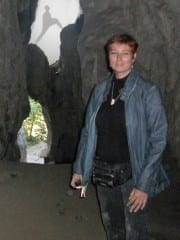
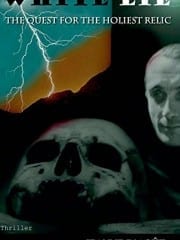
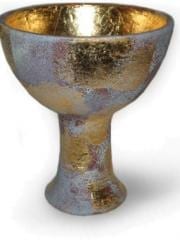
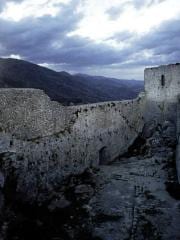





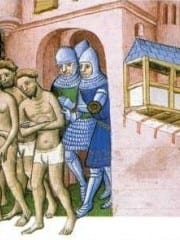
Последние комментарии
13 лет 41 неделя назад
13 лет 42 недели назад
13 лет 42 недели назад
13 лет 42 недели назад
13 лет 45 недель назад
13 лет 51 неделя назад